






| Tufted Duck (Aythya fuligula (Linnaeus, 1758)) |







|
|
Scientific name: Aythya fuligula (Linnaeus, 1758) Common name: Tufted Duck French name: Fuligule morillon, Morillon d'Europe. Order: Anseriformes Family: Anatidae Size: Body size: 40 to 47 cm; Weight: 550 to 900 g; Wingspan: 67 to 73 cm. Habitat: Fresh water lakes and ponds, slow running rivers. Food: The Tufted Duck is a diving duck which looks for food under water. It feeds on molluscs, water insects, crustaceans and small fishes. It can also feed on seeds collected in the bank vegetation. Nesting: The nest is a platform on the ground hidden under the bank vegetation. Females lay 6 to 11 eggs in May-June. Migration: Partially migratory. Northern birds can winter in temperate or southern Europe, in southern Asia or even move south of the Sahara. Geographic area: Eurasia. Occasional visitor to the North American coasts in winter. |
The male is black with white flanks and a white belly. A black tuft hangs at the back of the head. The eyes are yellow. The bill is grey with a black tip separated by a thin white line. The legs are grey. The female has a brown plumage which is paler on the flanks and on the under side. It also bears a tuft but it is slightly shorter than the male's one. Both sexes show a white wing bar which is visible in flight. Adult Greater Scaups (Aythya marila) have a more greyish upper side and they do not bear any tuft at the back of the head. Females show a white area at the base of the bill. This white area is also sometimes found on female Tufted Ducks but not so broad on the upper side. The black patch at the tip of the bill is much more reduced on Greater Scaups than on Tufted Ducks. |
| [To know more about the Tufted Duck] [Next picture] [Top] |
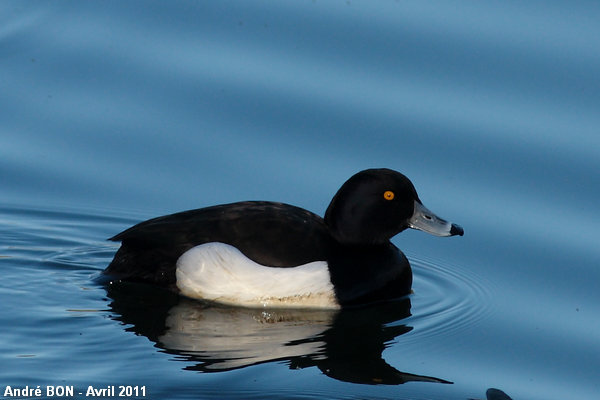
|
A few days after having observed Tufted Ducks in the Netherlands, here is my first observation close to my home, 600km south of the Netherlands. |
| [To know more about the Tufted Duck] [Next picture] [Previous picture] [Top] |
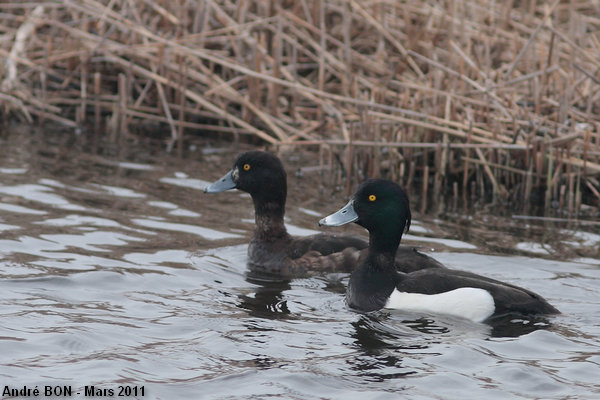
|
I had already taken pictures of Tufted Ducks in the London parks. Having observed the park employees feeding the birds, I have considered that these were note exactly wild populations. I am trying to restrict this web site to wildlife observation. |
| [To know more about the Tufted Duck] [Next picture] [Previous picture] [Top] |
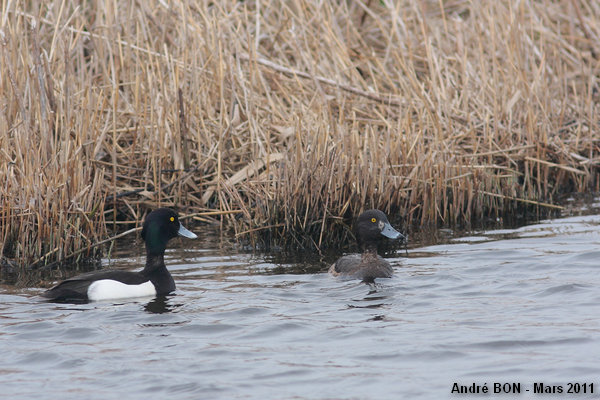
|
I have read that Tufted Ducks are forming new pairs every year. Mister and Madam have already chosen each other for this breeding season. I wish them a large family. |
| [To know more about the Tufted Duck] [Next picture] [Previous picture] [Top] |
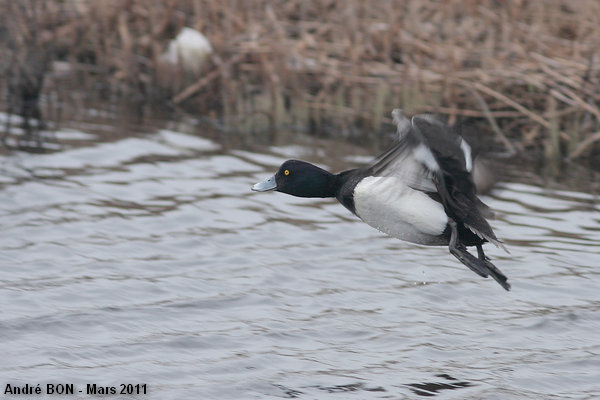
|
I have walked too close. This Tufted duck flies a little further to a quieter and safer place. |
| [To know more about the Tufted Duck] [Next picture] [Previous picture] [Top] |
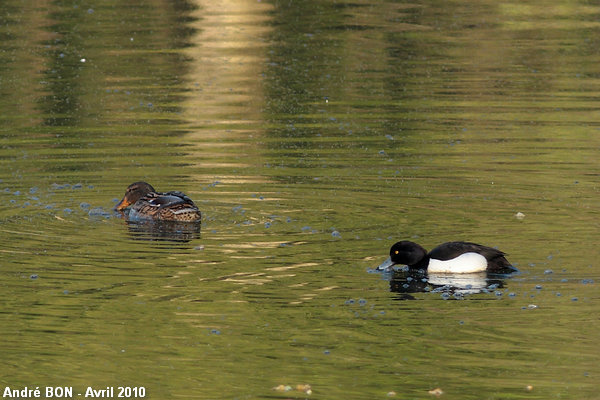
|
Female Common Mallards are not indifferent to the bright and unusual colours of other duck species. One of these females was constantly following this male Tufted Duck. |
| [To know more about the Tufted Duck] [Next picture] [Previous picture] [Top] |
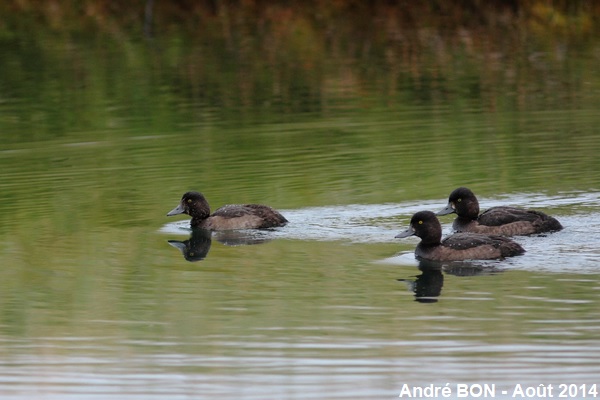
|
I have hesitated here with Greater Scaups (Aythya marila) but it seems to me that there is some kind of a small tuft on the back of the head of one of them. There is not much white at the base of the bill. It is difficult to evaluate the black area at the tip of the bill on this picture. |
| [To know more about the Tufted Duck] [Previous picture] [Top] |
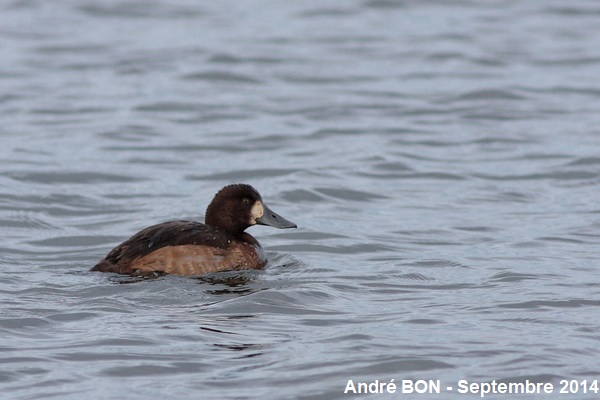
|
I hesitate here with a female Greater Scaup (Aythya marila). I do not see any tuft at the back of the head. It is difficult to see the black patch at the tip of the bill on this picture. The white area at the base of the bill does not extend very much upwards and the numerous Tufted Ducks seen in the neighbourhood could make me decide for this last species. However, not being very confident I just list this one as Aythya sp. |